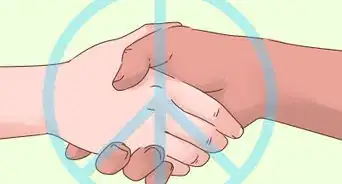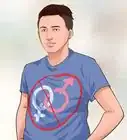This article was co-authored by Deb Schneider, LCSW, PPSC. Deb Schneider is a Licensed Clinical Social Worker in private practice in Oakland, CA, and a Program Manager for the Weiland Health Initiative at Stanford University. With over 15 years of experience, she specializes in creating safe spaces, respectful of marginalized identities, at the high school and college levels. Deb holds a Bachelor’s degree in Sociology and Women's Studies from Clark University and a Master of Social Work (MSW) with Health Concentration from the University of California, Berkeley School of Social Welfare.
wikiHow marks an article as reader-approved once it receives enough positive feedback. In this case, 100% of readers who voted found the article helpful, earning it our reader-approved status.
This article has been viewed 296,308 times.
Asexual people, informally known as "aces", are people who do not experience sexual attraction. This is the most basic definition; asexuality is often recognized as a spectrum between experiencing absolutely no sexual attraction and experiencing it very frequently, and the asexual label encompasses many non-allosexual identities, such as demisexuality and grey-asexuality. If you're discovering your own a/sexuality and could use some advice, and/or if you are the loved one of an asexual person, this article will hopefully provide you with a more nuanced understanding of sexuality and lack thereof.
Steps
Understanding Asexuality
-
1Don't try to change your sexual orientation: you are valid as you are, whether you are asexual or not. If you have an ace-spectrum orientation, it is not possible to change yourself into an allosexual (non-asexual) person. Regardless of the pressure societal expectations or internalized aphobia might place on you, don't try to be anything other than what you really are. There is nothing "wrong" or inferior about asexuality, as with any other sexual orientation. Be you, because you are wonderful just the way you are.[1]
-
2Choose whatever terms or labels fit the most for you. Human sexuality is incredibly complex, and for some, it is too complex to condense into a single label. It's okay to identify with multiple labels for your sexual orientation, you can choose labels that are seemingly contradictory, or decide not to identify with any specific term: your identity is your own, and nobody but you can tell you how to describe yourself. With that in mind, don't let anyone coerce you into choosing a term that doesn't fit for you, and don't feel compelled to push one on yourself. Do what makes you feel comfortable.
-
3Differentiate between types of attraction. For some asexual people, it's very important to understand that there are different types of attraction; others may choose not to distinguish or differentiate. Attraction can be sexual, romantic, alterous, aesthetic, sensual, or platonic, or any combination thereof. By definition, ace people do not feel sexual attraction, or experience it to a lesser degree than allosexual people, but they may feel any of the other types of attraction to varying degrees.[2]
- Sexual attraction is wanting to have sexual contact or do sexual activities with a person. Ace people typically do not experience this at all, or experience it to a lesser degree than allosexuals.
- Romantic attraction is feeling romantically attracted to someone. Some describe it as wanting to go on a date or do what they consider romantic things with that person.
- Alterous attraction is feeling attracted to a person in a way that is a mix of platonic and romantic, or something different.
- Aesthetic attraction is finding someone visually appealing to look at.
- Sensual attraction is wanting to do physical things with people. While these acts are not necessarily romantic or sexual, they can be.
- Platonic attraction is being attracted to someone in a friend-like way, wanting to become friends with them.
- The key of all of these types of attraction is that they can overlap, you do not have to be certain of your orientation in each of them, and that behavior does not dictate orientation.
-
4Differentiate between sexual needs. Asexual people often differentiate between a physical need for sexual release, which they think of as a hunger or like having to use the bathroom, and the desire for sexual intercourse with another person. If you feel the need to masturbate (even to porn or other sexual fantasies), for example, but lose interest the moment you think of a specific person, you might be asexual.
-
5Find resources. There are lots of resources and an active asexual community on the web. You may also be able to find resources through your school's counselor or through a local clinic. The resources can give you more information and help you figure out your feelings, while simultaneously connecting you with other people.
- Don't be afraid to question your identity for a while, or reject labels for your identity altogether. Some people take a while to figure out their sexual orientation, and that is perfectly okay. Even self-describing with the term "questioning" can connect you to a community of people who are unsure of or exploring their orientation.
-
6Meet people like you. Meeting other ace-spectrum people, or those who are otherwise LGBTQ+, can help by giving you a great forum to discuss your feelings and see that you are perfectly normal. There are other people like you! Join clubs or internet forums in order to find people with similar experiences. Ace rings which are black rings worn on your right middle finger, are way to find other asexual people.
-
7Accept changes. Just because you decide that the asexuality label may apply to you right now, that doesn't mean that it always has to. You may have been sexual in the past and you may be sexual in the future. Don't let anyone make you feel guilty because your desires and needs change over time.
Coming Out
-
1Don't feel pressured. Coming out is a deeply personal experience. If you're asking when the right time to come out is, the answer is just "when you feel it's right". Don't let anyone convince you when you should or shouldn't come out. If you want to tell people, tell them. If you don't, don't.
-
2Set aside time. When coming out to someone, it's a good idea to carefully choose the time and place. Choose some quiet time, when you'll have plenty of time to talk, and when both of you are in a calm, good mood.
-
3Be straightforward. Just come right out and say that you're asexual. Avoid unsure or apologetic language, just tell them exactly how you feel because you have no reason to be ashamed. If the situation is particularly sensitive, you might want to text the waters first by seeing what they think or know about asexuality, but otherwise, it's best just to start by saying something like:
- "Hey, I want to talk to you about something important to me. Is that okay? Here, let's sit down. I wanted to let you know, because you're very important to me, that I'm asexual."
-
4Explain asexuality. Once you've disclosed your own identity, ask if they know about asexuality and offer to explain to them what it is and how it works. You don't need to offer any more personal details about your own experiences than you want to.
- Provide resources. Having some extra information available, especially for parents and significant others, is a good idea (since they are more likely to be confused or concerned). You can print some information for them or send them digital resources. Ask them if they want more information before offering these, however. Pushing information on someone who is having trouble accepting your confession may cause greater tension.
-
5Give the opportunity to ask questions. Having questions is normal. Since asexuality is not seen as common and some people are not even aware it exists, you should not be offended when people have a hard time understanding it and you. Give them time to learn and let them know, in explicit terms, that they can ask you questions and you will try your best to answer.
-
6Set desired boundaries. Tell them what you are and aren't willing to discuss, either before or after your basic explanation. This can help avoid offensive questions. If you don't want to provide details about your feelings, then tell that. If you don't want a lot of questions about your personal sex life, then tell them that.
Finding Relationships
-
1Look for other asexual people. The easiest way to relationships inclusive of asexuality is to date others in the ace spectrum. You can meet and find people through local support groups, using online dating services specifically for asexual people, or by simply asking your friends to hook you up (if you're lucky).
-
2Look for open-minded people. If you can't find other ace people to date, or can't find any that you can connect with on an emotional level, then you may have to date allosexuals if you want to have a relationship. Try to bond with people who you know are open-minded or who care for you very deeply. The two of you may be able to make things work, but it will take compromise on both sides.
-
3Let relationships develop naturally. Don't ever try to force a relationship on yourself or someone else. Just because someone you meet is asexual doesn't mean the two of you should get married. Prioritize your feelings over simply being in a relationship.
-
4Discuss your situation with your partner. If you decide you want to date someone who is sexual, after a certain period of time has passed you're going to have to explain your situation. Explain as early as you are comfortable with, since dating an asexual can be a huge commitment for a sexual. Neither of you deserves to end up with hurt feelings.
- Even if you are both asexual, it's probably a good idea to discuss your ideas about relationships. Different asexual people will have different ideas about what they are and aren't comfortable with and what they do and don't need.
-
5Lay out some ground rules. Regardless of who you're dating, it's probably a good idea to set some basic rules and expectations. This will help with awkwardness later. Remember that everyone gets a chance to talk during this conversation and everyone's needs are valid. That is how healthy relationships work.
Maintaining Relationships
-
1Keep constant open communication. The real key to asexual relationship success (as in any other relationship) is communication. Anytime either of you has a problem or feels a certain way, there should be a safe, supportive environment in which to discuss the problem with each other.
-
2Find other ways to have fun together. Asexual relationships generally don't include sex (although that is not absolute), but they do include pretty much everything else that comes with relationships. You can go on dates, marathon the first season of that show you both always wanted to watch, read books together, go to music shows, attend parties...the sky is the limit. Just remember that there are always other things to do than just have sex. Relationships are about much more than that.
-
3Find release for your partner. If you are dating a sexual, you need to appreciate the fact that they will have sexual needs that must be met. How those needs get met is up to the two of you, however. You may encourage them to go have sex with other people. You may choose to have sex with them as an act of love, rather than your own desire. You may choose to pleasure them with toys, rather than your body. Talk it out and find something that works for the two of you.
-
4Do what works for you. In the end, your entire relationship, no matter who it's with, is going to only be defined by what works for both of you. Don't let other people judge you or tell you what your relationship should look like. In the end, if you and your partner are happy and satisfied, that's all that matters.
-
5Recognize a bad match. Even if you really like someone and you'd had a good time dating them, they may still not be a good match for you or you for them. If they have sexual needs that you just can't fulfill, or if they can't respect your needs, then it may be better to end the relationship.
Warnings
- If your feelings are too much for you to deal with alone, seek help.⧼thumbs_response⧽
References
- ↑ https://www.thetrevorproject.org/resources/article/understanding-asexuality/
- ↑ https://lgbtq.unc.edu/resources/exploring-identities/asexuality-attraction-and-romantic-orientation/
- ↑ http://www.psychologytoday.com/blog/living-single/200912/asexuals-who-are-they-and-why-are-they-important
- http://www.asexuality.org/home/
- http://asexualitystudies.org/
About This Article
People who are asexual feel no sexual attraction to other people of any gender. Asexuals may still feel the need for sexual release, but they’ll often lose interest the moment they think of a specific person. However, sexuality is complex and fluid, so avoid labels if they feel limiting. If you’re still questioning or want to talk to others who may feel the same way, then look for asexual communities on the web or ask your school’s counselor or local clinic about local groups that you can join. If you’re ready to venture into a relationship, meet people through local support groups, online dating services, or by asking your friends if they know anyone who might be a good fit for you. You can also look for open-minded people to have a relationship with, though know that these relationships may require some more compromising. No matter what, communicate clearly and openly with your romantic partner about your sexuality. To learn how to come out as asexual, keep reading!

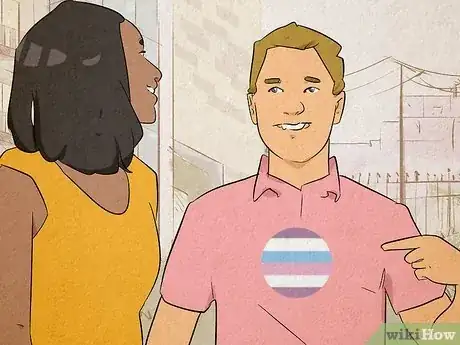
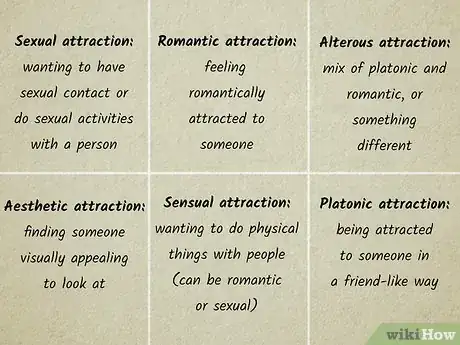
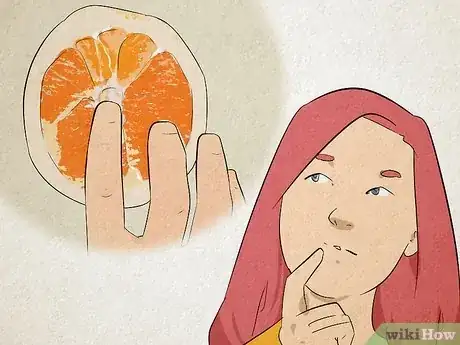
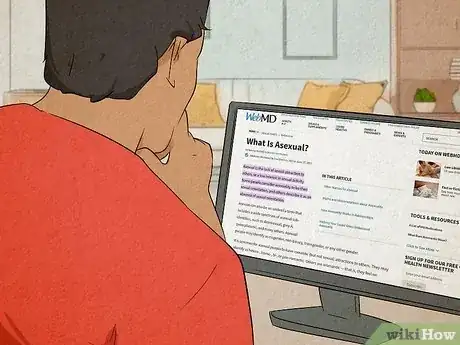
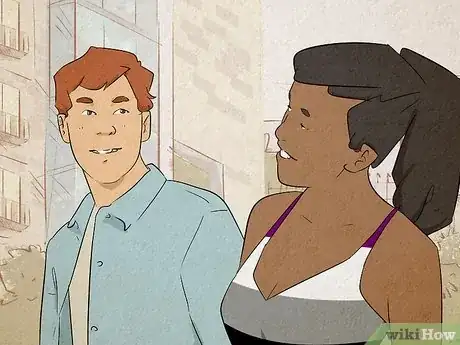

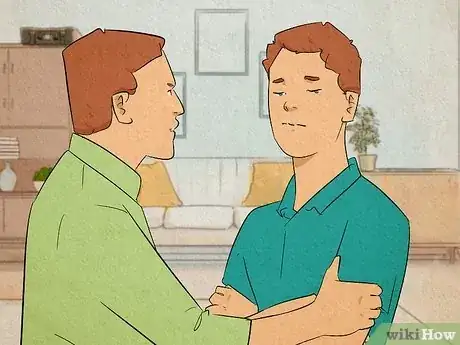

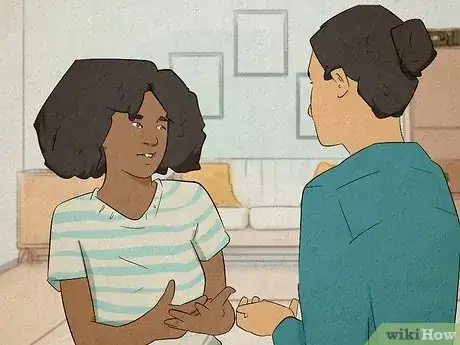


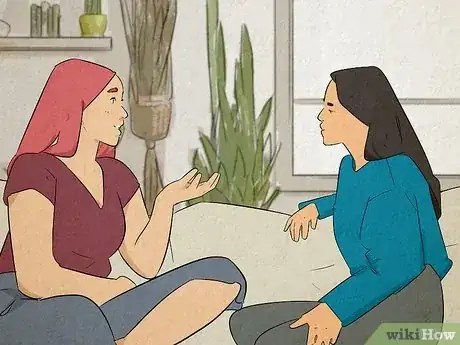
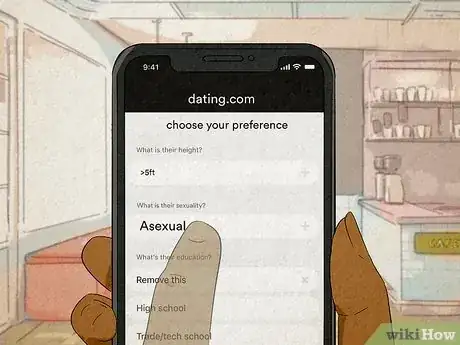
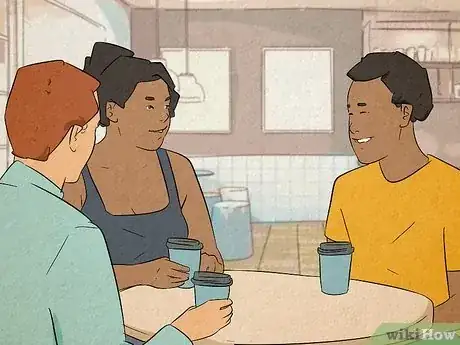
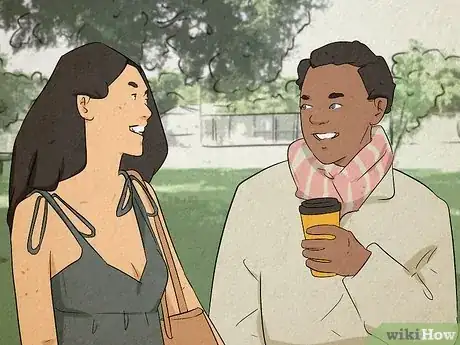
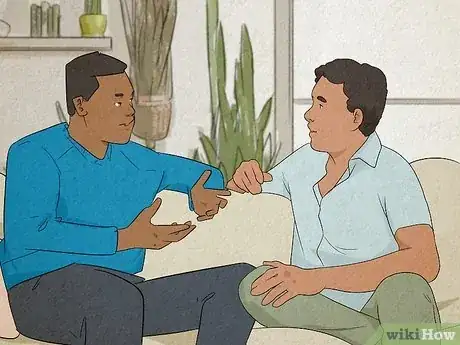
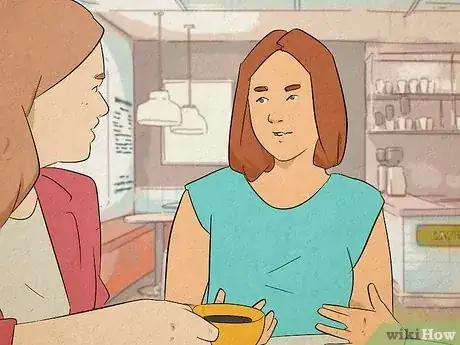
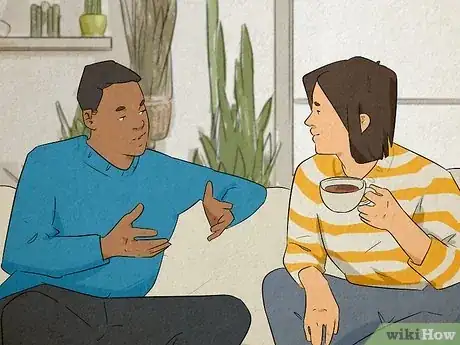
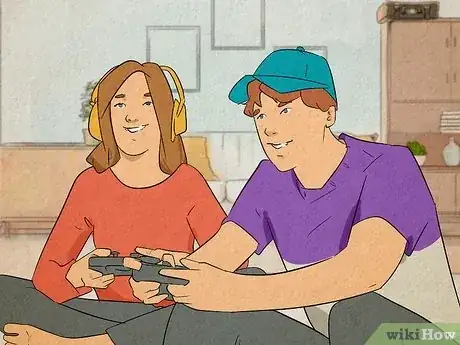
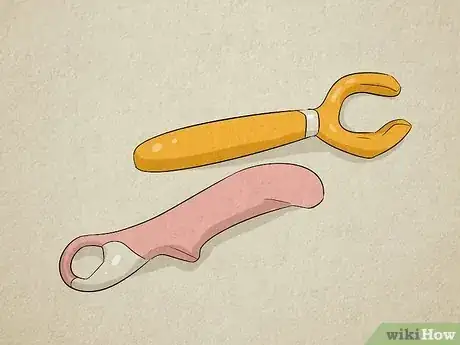
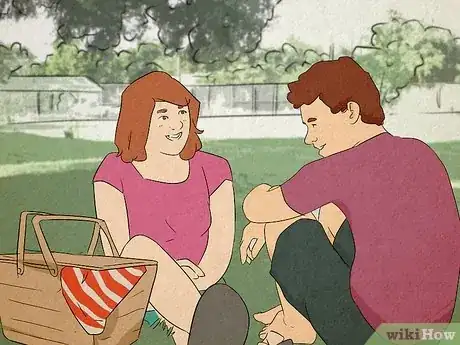







-Step-14-Version-2.webp)
-Step-16.webp)



